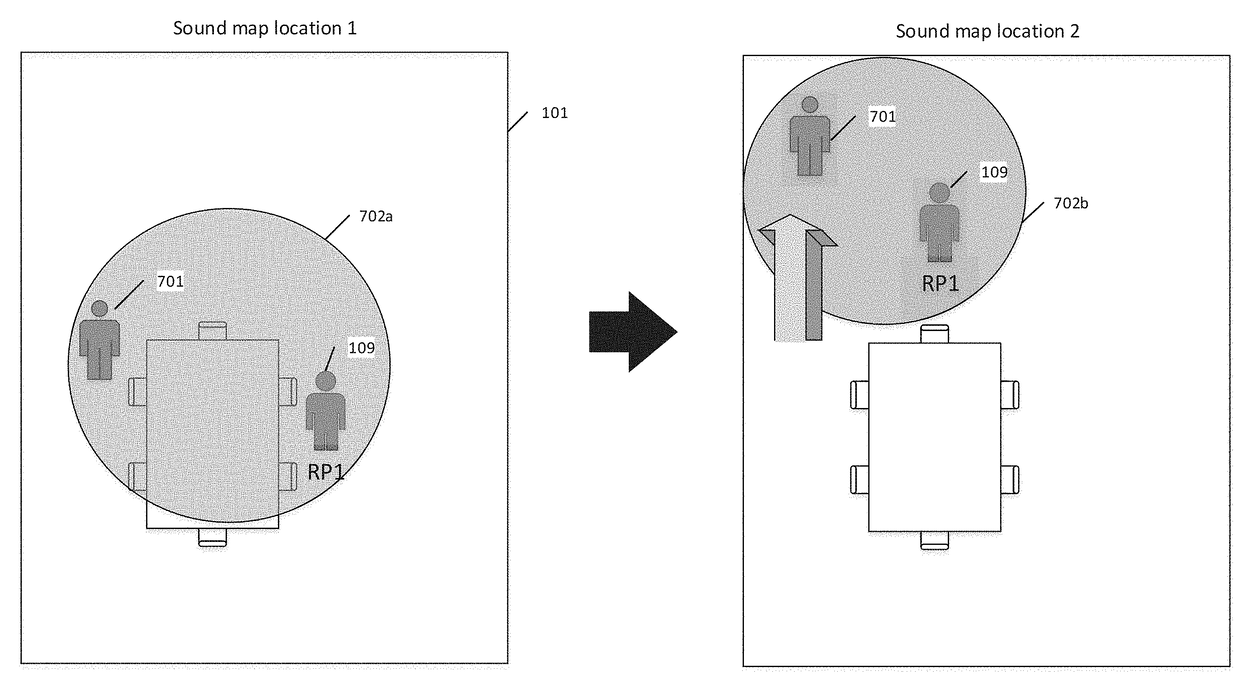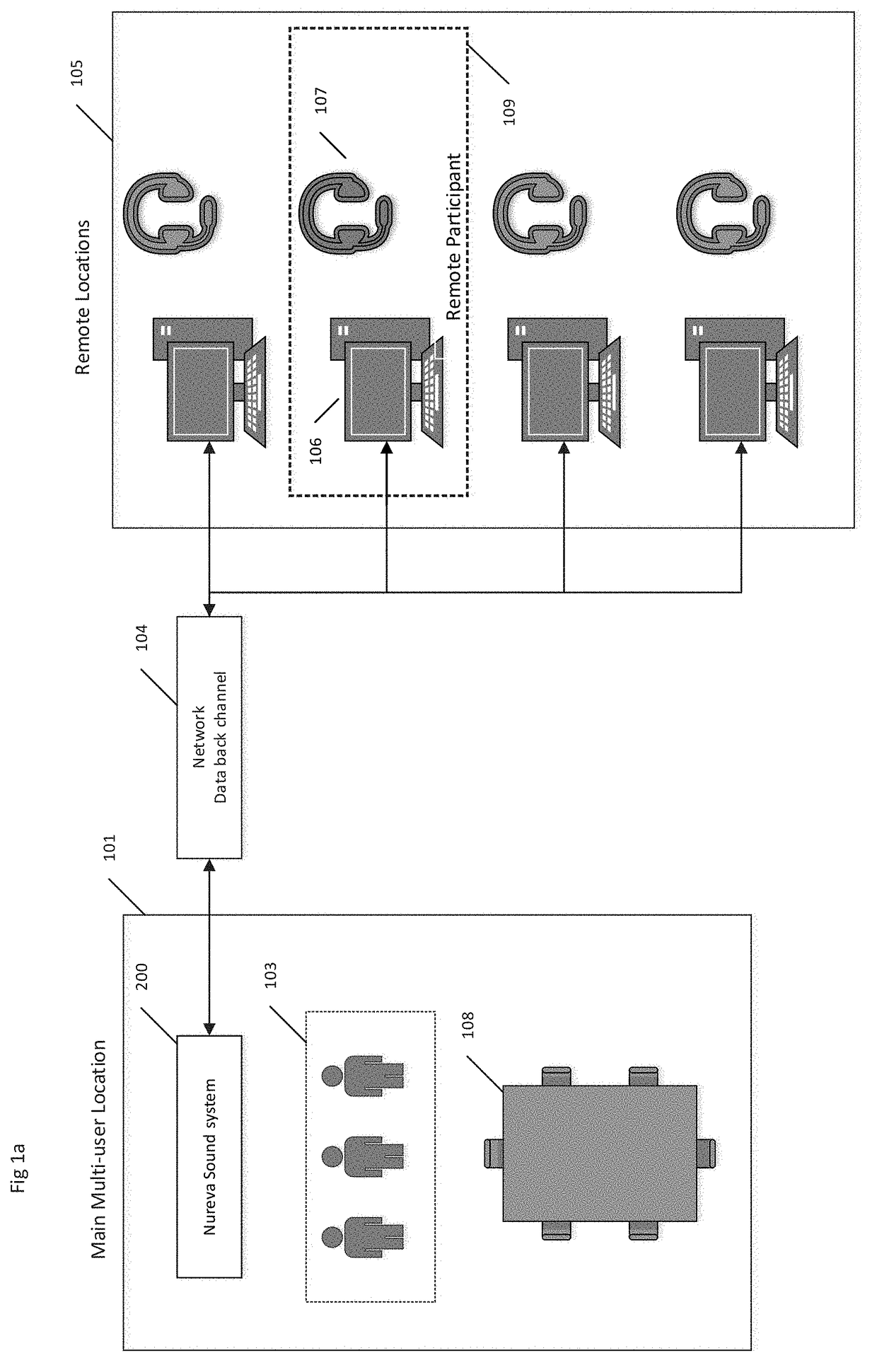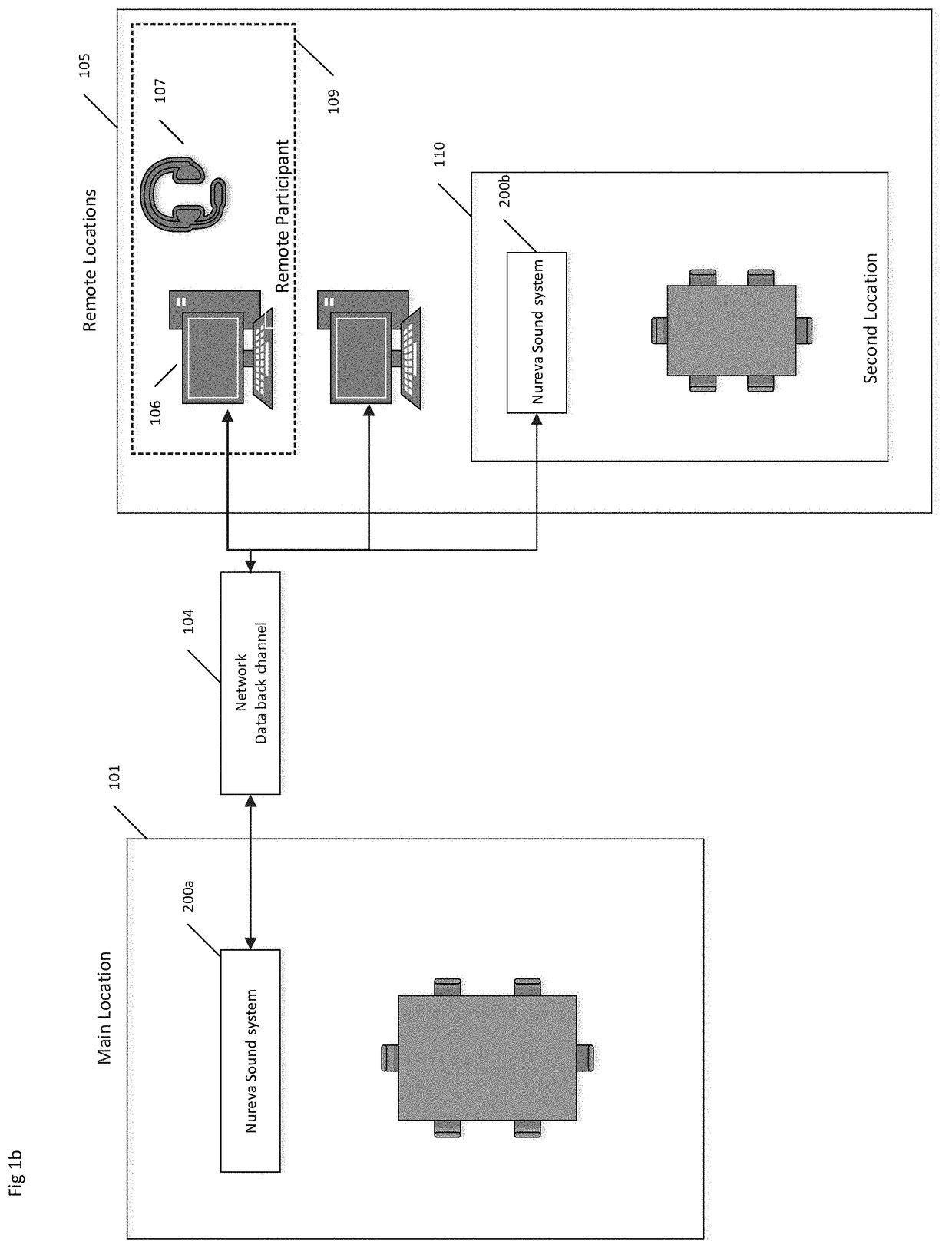Method, apparatus and computer-readable media for virtual positioning of a remote participant in a sound space
a technology of remote participants and computer-readable media, applied in the field of method, apparatus and computer-readable media for virtual positioning of a remote participant in a sound space, can solve the problems of not being able to confine or expand, not being able to isolate unwanted noise sources, and sound quality, so as to optimize their listening positions and experiences
- Summary
- Abstract
- Description
- Claims
- Application Information
AI Technical Summary
Benefits of technology
Problems solved by technology
Method used
Image
Examples
Embodiment Construction
[0031]The present invention is directed to systems and methods that enable groups of people, known as participants, to join together over a network, such as the Internet or similar electronic channel, in a remotely distributed, real-time fashion, employing personal computers, network workstations, or other similarly connected appliances or devices, without face-to-face contact, to engage in effective audio conference meetings that utilize large multi-user spaces (spaces) with distributed participants.
[0032]Advantageously, embodiments of the present systems and methods provide an ability to provide remote participants the capability to focus the in-multiuser-space microphone array to the desired speaking participant and / or sound sources. And the present invention may be applied to any one or more shared space(s) having multiple microphones for both focusing sound source pickup and simulating a local sound recipient for a remote listening participant.
[0033]It is important to establish...
PUM
 Login to view more
Login to view more Abstract
Description
Claims
Application Information
 Login to view more
Login to view more - R&D Engineer
- R&D Manager
- IP Professional
- Industry Leading Data Capabilities
- Powerful AI technology
- Patent DNA Extraction
Browse by: Latest US Patents, China's latest patents, Technical Efficacy Thesaurus, Application Domain, Technology Topic.
© 2024 PatSnap. All rights reserved.Legal|Privacy policy|Modern Slavery Act Transparency Statement|Sitemap



